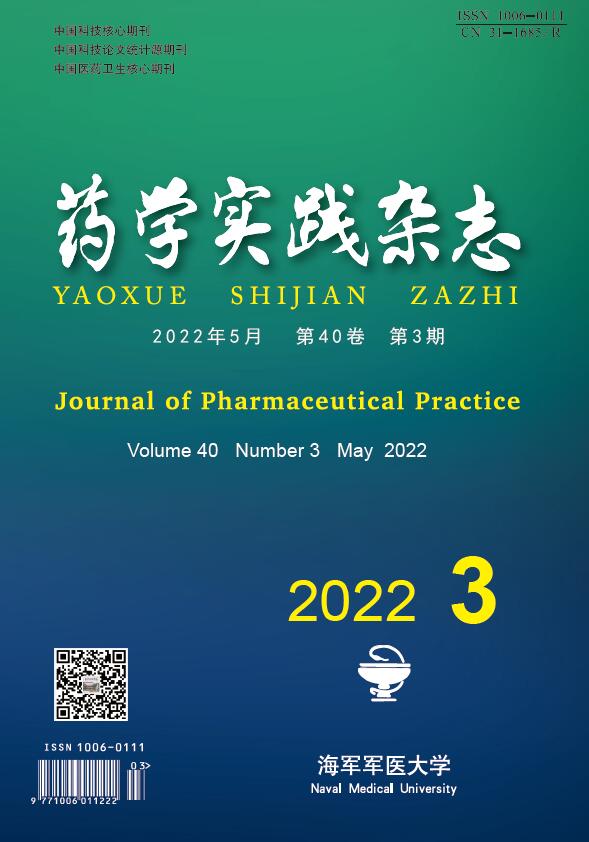-
晕动症是由于机体受到各种运动刺激(如乘车、乘船 、乘坐飞行器等)所引发的一系列综合征,主要表现为头晕、面色苍白、恶心、呕吐、出冷汗等前庭和自主神经反应为主的症状[1]。目前临床上抗组胺药物广泛用于晕动症的治疗,可以缓解晕动症状,但不良反应较大[2]。随着人们生活质量的提高和工作的需要,发现疗效好、不良反应少的抗晕动症药物就显得尤为重要。盐酸苯海拉明/咖啡因复方是由盐酸苯海拉明和咖啡因进行有效质量配比组成的复合物,可以减轻盐酸苯海拉明在治疗晕动症时引起的不良反应和不适感。
为了明确盐酸苯海拉明/咖啡因复方在治疗剂量或治疗剂量以上的暴露水平时,潜在不期望出现的对生理功能的不良反应[3]。本实验对该复方进行了安全药理学研究,主要观察该复方对小鼠神经系统及Beagle犬心血管系统、呼吸系统的影响,为后续进一步的临床试验和临床应用提供参考。
-
SPF级ICR小鼠,共60只,雌雄各半,购自上海西普尔-必凯实验动物有限公司,实验动物生产许可证号:SCXK(沪) 2018-0006;普通级Beagle犬36条,雌雄各半,购自上海甲干生物科技有限公司,实验动物生产许可证号:SCXK(沪) 2015-0005;小鼠饲养于SPF级动物房,Beagle犬饲养于普通级动物房,实验动物使用许可证号:SYXK(沪)2017-0004。
-
盐酸苯海拉明/咖啡因复方(盐酸苯海拉明:启东东岳药业有限公司,含量:100.1%,批号:DH-201812104;咖啡因:山东新华制药股份有限公司,含量:99.8%,批号:16112122),配制受试物时盐酸苯海拉明、咖啡因按1: 2.4的比例混匀;戊巴比妥钠(MERCK公司,批号:1063180500)。
-
ZH-ZPT小动物自发活动检测仪(淮北正华生物仪器设备有限公司);BL-420E生物机能实验系统、BL-420S生物机能实验系统(成都泰盟科技有限公司)。
-
ICR小鼠60只,雌雄各半。取基部固定,高为76.2 cm,直径为1.27 cm的光滑金属杆,将小鼠放于杆顶,让其自行爬下,预选能自行爬下的动物进行试验。雌雄分别按体重随机分为6个组,分别为溶媒对照组(超纯水)、复方低剂量组(51 mg/kg)、复方中剂量组(102 mg/kg)、复方高剂量组(204 mg/kg)、盐酸苯海拉明组(60 mg/kg)和咖啡因组(144 mg/kg)。灌胃给予受试物,给药体积均为15 ml/kg。分别于给药前及给药后0.5、1、2、3、4 h对小鼠的爬杆能力进行评级。分级标准:0级:一步一步向下爬;1级:向下滑行;2级:不能抓住棒;3级:翻正反射消失。在0~3级间又设0.5级、1.5级和2.5级。
-
选取健康的Beagle犬36条,雌雄各半,分别按体重随机分6个组,分别为溶媒对照组(超纯水)、复方低剂量组(雄14.2 mg/kg,雌5.66 mg/kg)、复方中剂量组(雄28.3 mg/kg,雌14.2 mg/kg)、复方高剂量组(雄56.6 mg/kg,雌28.3 mg/kg)、苯海拉明组(雄16.6 mg/kg,雌8.3 mg/kg)和咖啡因组(雄40.0 mg/kg,雌20.0 mg/kg)。灌胃给予受试物,给药体积均为5 ml/kg。给药前,将Beagle犬以3%戊巴比妥钠溶液静脉注射麻醉,仰卧位固定四肢和头部,股动脉插管,通过BL-420E/BL-420S生物机能实验系统采集信息。观察给药前、给药后即刻,以及0.25、0.5、1、2、3 h受试物对犬收缩压、舒张压、平均动脉压、心率、ECG(P波电压、R波电压、T波电压、QRS时间、PR间期、QT间期)、呼吸频率和幅度的影响。
-
实验数据均采用(
$\bar x $ ±s)表示,采用Graph Pad 5.0进行数据统计分析。P<0.05表示差异具有统计学意义。 -
各剂量组小鼠给药后一般状态未见明显异常,未出现小鼠死亡。与溶媒对照组相比,以及与同组给药前相比,给药后各剂量组各时间点小鼠爬杆能力均未见明显差异(P>0.05)。初步表明盐酸苯海拉明/咖啡因复方对小鼠爬杆能力无明显影响,结果见表1。
组别 给药前 给药后(t/h) 0.5 1 2 3 4 复方低剂量组 0.30±0.26 0.35±0.24 0.30±0.26 0.35±0.24 0.30±0.26 0.35±0.24 复方中剂量组 0.25±0.26 0.25±0.26 0.30±0.26 0.30±0.26 0.25±0.26 0.15±0.24 复方高剂量组 0.30±0.26 0.45±0.44 0.40± 0.32 0.40±0.32 0.35±0.34 0.25±0.26 苯海拉明组 0.30±0.26 0.25±0.26 0.30±0.26 0.30±0.26 0.30±0.26 0.20±0.26 咖啡因组 0.35±0.24 0.30±0.26 0.30±0.26 0.40±0.32 0.25±0.26 0.30±0.26 -
给药后,各剂量组在各时间点与溶媒对照组相比,以及与同组给药前相比,Beagle犬心率、P波电压、R波电压、T波电压、QRS时间、PR间期、QT间期无统计学差异(P>0.05)。初步表明盐酸苯海拉明/咖啡因复方对Beagle犬心电指标无明显影响,心电检测结果见表2。
组别 检测项目 给药前 给药后(t/min) 即刻 15 30 60 120 180 溶媒对照组 心率(次/min) 176.0±19.0 174.7±19.2 172.3±14.0 170.2±14.1 161.7±21.3 158.5±44.3 145.2±42.3 P波(mV) 0.16±0.09 0.16±0.15 0.18±0.14 0.19±0.14 0.2±0.15 0.14±0.12 0.15±0.13 R波(mV) 0.79±0.33 0.79±0.38 0.86±0.44 0.84±0.37 0.91±0.43 0.81±0.43 0.78±0.40 T波(mV) 0.13±0.08 0.09±0.07 0.11±0.1 0.12±0.09 0.16±0.09 0.1±0.02 0.11±0.06 QRS间期(ms) 98.2±9.6 92.0±27 92.7±20.8 99.2±24.1 99.3±19.2 95.3±13.3 98.0±19.9 PR间期(ms) 58.7±15.7 56.3±12.0 57.2±11.2 57.3±8.5 56.7±8.5 54.0±12.9 62.5±12.2 QT间期(ms) 209.3±27.7 212.5±21.4 223.2±12.4 227.3±8.0 212.2±18.0 210.5±9.4 229.2±16.1 复方低剂量组 心率(次/min) 155.5±35.4 152±34.3 149.8±43.2 157.2±43.4 156±43.1 164±16.3 157.2±16.2 P波(mV) 0.19±0.11 0.19±0.09 0.17±0.10 0.17±0.09 0.16±0.07 0.19±0.14 0.21±0.11 R波(mV) 0.97±0.55 0.98±0.55 1.02±0.6 0.99±0.59 0.96±0.59 1.06±0.81 1.07±0.69 T波(mV) 0.16±0.09 0.17±0.08 0.16±0.07 0.15±0.09 0.17±0.1 0.15±0.07 0.19±0.11 QRS间期(ms) 92.8±11.6 87.8±12.0 90.0±13.3 87.7±13.5 90.3±18.4 87.0±10.5 89.8±17.7 PR间期(ms) 66.7±30.8 67.2±21.0 74.0±39.4 68.7±28.8 63.3±23.6 64.8±22.1 61.3±13.8 QT间期(ms) 214.0±7.8 221.7±14.8 224.3±13.2 206.8±17.8 209.7±20.8 207.2±13.4 202.8±19.5 复方中剂量组 心率(次/min) 182.0±26.4 181.5±25.9 180.8±24.2 182.8±26.9 181.3±30.5 185.3±30.7 186.2±25.5 P波(mV) 0.16±0.08 0.16±0.10 0.17±0.10 0.16±0.10 0.15±0.09 0.16±0.10 0.15±0.11 R波(mV) 0.62±0.34 0.59±0.32 0.61±0.3 0.59±0.36 0.61±0.36 0.53±0.3 0.6±0.37 T波(mV) 0.12±0.08 0.13±0.07 0.13±0.07 0.16±0.13 0.14±0.08 0.11±0.07 0.12±0.12 QRS间期(ms) 78.7±15.1 76.8±18.4 80.2±13.4 81.7±12.4 77.0±10.3 78.3±11.9 81.5±8.0 PR间期(ms) 51.8±15.1 53.7±10.3 53.8±12.2 53.3±26.1 54.3±20.3 45.8±16.2 48.0±17.0 QT间期(ms) 201.3±21 199.8±19.6 203±17.1 197.7±30.7 187.7±26.7 197.2±12 201.8±30.2 复方高剂量组 心率(次/min) 177.2±36.9 174.2±33.8 170.2±29.7 170.3±30.5 173.7±31.4 171.5±27.7 178.3±28.6 P波(mV) 0.29±0.14 0.28±0.17 0.27±0.18 0.27±0.14 0.31±0.21 0.33±0.22 0.34±0.25 R波(mV) 0.99±0.69 0.96±0.63 0.9±0.62 1.01±0.67 0.99±0.69 1.04±0.74 1.06±0.77 T波(mV) 0.15±0.08 0.16±0.09 0.17±0.09 0.17±0.12 0.15±0.09 0.17±0.08 0.16±0.11 QRS间期(ms) 80.8±9.4 79.5±14.8 84.0±12.6 82.7±11.1 82.3±18.4 82.8±17.3 82.8±10.4 PR间期(ms) 65±18.8 61.2±22.8 68.8±24.3 67.7±25.0 69.7±23.2 69.8±26.1 66.8±19.4 QT间期(ms) 193.3±23.4 198.5±31.6 188.3±26.6 201.2±22.1 201.2±19.6 195.0±22.8 193.0±27.8 苯海拉明组 心率(次/min) 155.5±6.1 155.7±7.3 163.8±24.8 167.0±30.9 157.3±16.4 147.0±28.5 147.2±45.6 P波(mV) 0.16±0.12 0.16±0.12 0.17±0.10 0.18±0.12 0.18±0.13 0.15±0.10 0.15±0.08 R波(mV) 0.75±0.54 0.77±0.56 0.74±0.54 0.76±0.63 0.79±0.64 0.81±0.61 0.79±0.55 T波(mV) 0.12±0.08 0.11±0.08 0.10±0.06 0.10±0.06 0.11±0.08 0.12±0.06 0.10±0.06 QRS间期(ms) 85.7±20.0 84.0±14.8 86.2±20.0 85.2±14.6 90.0±15.5 91.8±14.6 90.3±10.6 PR间期(ms) 55.7±36.9 66.5±50.2 49.8±22.5 53.0±21.3 55.8±35.5 58.2±30.9 63.8±28.6 QT间期(ms) 222.2±7.2 211.7±10.8 215.7±17.7 216.3±15 218.8±19.6 223.8±17.8 217.3±12.8 咖啡因组 心率(次/min) 159.0±31.4 153.8±29.8 160.8±27.8 164.7±34.5 168.5±36 163.2±40.8 164.0±48.9 P波(mV) 0.23±0.09 0.16±0.09 0.20±0.08 0.17±0.07 0.18±0.07 0.19±0.08 0.17±0.05 R波(mV) 0.78±0.4 0.74±0.41 0.72±0.35 0.79±0.46 0.80±0.47 0.83±0.54 0.84±0.43 T波(mV) 0.14±0.14 0.12±0.11 0.10±0.08 0.07±0.07 0.13±0.13 0.12±0.08 0.15±0.15 QRS间期(ms) 88.5±13.4 92.8±12.6 93.0±18.5 86.0±10.5 85.5±6.0 95.3±13.7 90.5±13.8 PR间期(ms) 45.3±13.3 44.8±10.6 47.8±12.3 49.5±14.8 59.2±23.4 58.0±16.5 54.5±13.2 QT间期(ms) 205.0±27.6 223.7±22.4 221.0±18.4 209.3±23.9 211.8±23.3 212.5±17.2 198.5±20.3 -
给药后,各剂量组在各时间点与溶媒对照组相比,以及与自身给药前相比,Beagle犬收缩压、舒张压、平均动脉压无统计学差异(P>0.05)。初步表明盐酸苯海拉明咖啡因复方对Beagle犬血压无明显影响,血压检测结果见表3。
组别 检测项目 给药前 给药后(t/min) 即刻 15 30 60 120 180 溶媒对照组 收缩压(mmHg) 172.0±27.5 171.0±27.8 176.4±22.4 180.2±21.8 176.4±21.7 176.0±25.3 180.6±21.6 舒张压(mmHg) 115.2±23.1 114.6±23.8 116.6±20.3 119.3±19.0 124.6±21.3 113.5±20.9 116.5±18.7 平均压(mmHg) 134.1±23.8 133.4±24.5 136.5±20.5 139.6±19.0 141.9±18.5 134.3±21.4 137.8±19.0 复方低剂量组 收缩压(mmHg) 162.4±22.3 159.7±22.2 168.7±31.7 172.0±24.3 177.4±24.7 182.2±15.7 181.3±16.6 舒张压(mmHg) 110.9±9.9 108.5±11.3 112.1±13.9 117.1±11.3 120.4±12.0 126.8±11.7 127.6±12.7 平均压(mmHg) 128.1±13.8 125.5±14.7 131.0±19.3 135.4±15.4 139.4±15.9 145.3±12.4 145.5±13.1 复方中剂量组 收缩压(mmHg) 198.5±28.7 198.9±25.0 205.0±28.3 202.9±30.0 199.9±31.4 201.9±35.4 209.6±25.5 舒张压(mmHg) 123.8±16.7 125.4±16.8 125.3±16.1 126.6±19.6 123.8±20.7 131.2±18.2 132.7±10.9 平均压(mmHg) 148.7±19.5 149.9±18.0 151.9±18.9 152.1±21.9 149.2±22.5 154.8±22.8 158.3±14.6 复方高剂量组 收缩压(mmHg) 180.5±15.4 179.8±16.0 179.7±16.5 181.9±18.4 185.0±19.4 178.2±16.1 184.1±20.2 舒张压(mmHg) 123.1±15.5 124.1±17.3 127.8±20.3 128.5±20.2 129.7±21.6 126.4±22.6 135.4±20.9 平均压(mmHg) 142.2±13.6 142.7±15.3 145.1±18.0 146.3±18.0 148.1±18.6 143.6±18.5 151.6±18.4 苯海拉明组 收缩压(mmHg) 161.5±47.6 163.7±47.8 170.5±42.9 183.9±47.1 193.0±39.2 187.1±33.7 182.5±41.2 舒张压(mmHg) 107.4±29.4 107.2±25.6 113.3±28.5 118.6±28.7 120.4±24.1 125.7±30.1 112.4±26.6 平均压(mmHg) 125.4±35.3 126.0±32.9 132.4±33.0 140.4±34.8 144.6±28.4 146.2±30.7 135.8±31.3 咖啡因组 收缩压(mmHg) 189.0±36.7 187.7±34.8 193.9±34.4 201.8±34.6 208.5±40.2 204.6±42.3 204.7±44.5 舒张压(mmHg) 124.5±18.2 123.3±17.6 130.6±14.7 132.3±17.7 139.4±24.2 136.1±21.4 133.0±24.3 平均压(mmHg) 146.0±24.7 144.8±23.0 151.7±20.5 20.73±2.99 155.5±22.4 162.4±28.7 156.9±30.3 -
与溶媒对照组相比,以及与自身给药前相比,给药后各剂量组各时间点Beagle犬的呼吸频率和呼吸幅度均无明显差异。初步表明盐酸苯海拉明/咖啡因复方对Beagle犬呼吸系统无明显影响。呼吸检测指标结果见表4。
组别 检测项目 给药前 给药后(t/min) 即刻 15 30 60 120 180 溶媒对照组 呼吸频率(次/min) 18.7±2.9 18.4±3.4 15.6±4.8 16.0±5.5 17.4±4.3 14.8±4.1 14.4±6.7 呼吸幅度(g) 9.77±1.62 9.77±2.51 10.67±2.05 11.02±2.48 8.77±1.67 9.79±2.03 9.23±3.03 复方低剂量组 呼吸频率(次/min) 14.7±4.2 14.6±3.5 17.9±9.6 16.7±9.5 15.2±3.6 14.7±2.3 14.3±3.1 呼吸幅度(g) 10.63±1.86 10.38±1.44 10.37±3.13 10.97±1.45 11.21±1.83 10.57±2.45 10.71±2.03 复方中剂量组 呼吸频率(次/min) 20.9±6.0 21±5.6 19.7±6.0 19.5±4.1 18.8±3.9 20.3±5.9 20.3±6.2 呼吸幅度(g) 9.16±2.67 8.55±2.28 8.41±1.90 9.16±2.62 7.51±1.81 8.56±1.50 8.99±1.65 复方高剂量组 呼吸频率(次/min) 22.2±7.6 20.6±5.7 22.7±5.4 20.1±2.5 22.2±6.6 22±5.9 20.3±5.3 呼吸幅度(g) 10.6±2.07 10.67±1.11 10.59±1.27 10.29±2.67 10.82±1.69 8.95±2.04 10.52±1.47 苯海拉明组 呼吸频率(次/min) 11.4±4.0 13.0±4.3 11.2±2.8 13.0±4.6 13.9±5.9 15.5±6.0 15.3±6.2 呼吸幅度(g) 10.75±1.96 10.41±1.55 9.95±1.47 10.35±1.54 11.54±2.26 9.62±1.70 9.54±2.39 咖啡因组 呼吸频率(次/min) 14.6±3.0 14.2±2.9 12.9±2.1 14.7±4.4 16.9±4.2 16.1±5.4 15.2±5.0 呼吸幅度(g) 9.52±2.55 10.25±1.57 10.69±0.98 10.12±1.4 10.97±2.08 9.46±1.30 9.24±1.35 -
盐酸苯海拉明属抗组胺药物,有抑制中枢神经系统的作用,通过抑制前庭反应的敏感性,发挥抗晕动症的效果,有效降低患者的焦虑感、烦躁感,起到镇静的作用,同时也有抗胆碱能作用,缓解脑血管痉挛,改善脑血管循环,达到止吐的效果[4-7],但会引起嗜睡、疲乏、注意力涣散、记忆力下降等不良反应[8]。咖啡因属甲基黄嘌呤类药物,具有拮抗腺苷受体的作用,可有效的刺激中枢神经系统,提高机体对二氧化碳的敏感性,兴奋呼吸中枢[9-10]。盐酸苯海拉明/咖啡因复方是一种由盐酸苯海拉明和咖啡因进行有效质量配比组成的复合物,该配比是根据前期大小鼠药理学及药效学多次试验结果,确定了该复方的配比为盐酸苯海拉明与咖啡因之比为1:2.4,在盐酸苯海拉明发挥抗晕动症效果的同时利用咖啡因兴奋中枢神经系统的作用,改善盐酸苯海拉明在对抗晕动症时所引起的不良反应,为临床上晕动症的防治提供一个新的治疗方法和思路,具有很好的使用价值和应用前景。
本实验对盐酸苯海拉明/咖啡因复方进行安全药理学研究,观察了该复方对小鼠神经系统及Beagle犬心血管系统、呼吸系统的影响。结果表明小鼠单次灌胃给予盐酸苯海拉明/咖啡因复方(盐酸苯海拉明与咖啡因之比为1∶2.4)给药剂量在51、102、204 mg/kg时,对小鼠的爬杆能力无明显影响,提示该复方对小鼠神经系统无明显作用。
前期试验结果显示,雌性和雄性Beagle犬对受试物敏感性不一致(预实验:雄性,盐酸苯海拉明/咖啡因16.6和40 mg/kg;雌性,盐酸苯海拉明/咖啡因8.3和20 mg/kg),重复灌胃给予受试物4周后均出现毒性反应。因此,实验剂量设计时,雌雄动物给予不同剂量。Beagle犬单次灌胃给予同上比例复方,给药剂量雄性为14.2、28.3、56.6 mg/kg、雌性为5.66、14.2、28.3 mg/kg时,对Beagle犬收缩压、舒张压、平均动脉压、心率、P波电压、R波电压、T波电压、QRS时间、PR间期、QT间期、呼吸频率和幅度无明显影响,提示盐酸苯海拉明/咖啡因复方对Beagle犬的心血管系统、呼吸系统无明显作用。
在本实验条件下,单次灌胃给予盐酸苯海拉明/咖啡因复方对实验动物神经系统、心血管系统、呼吸系统无明显影响,提示盐酸苯海拉明/咖啡因复方具有较高的安全性。
Safety pharmacological study of the compound of diphenhydramine hydrochloride and caffeine
doi: 10.12206/j.issn.1006-0111.202105115
- Received Date: 2021-05-25
- Accepted Date: 2022-03-01
- Rev Recd Date: 2021-07-14
- Available Online: 2023-11-06
- Publish Date: 2022-05-25
-
Key words:
- compound of diphenhydramine hydrochloride and caffeine /
- safety pharmacology /
- nervous system /
- cardiovascular system /
- respiratory system
Abstract:
| Citation: | REN Lijun, GU Jing, SHI Wenjing, WANG Ruina, ZHANG Xiaofang, CHEN Jikuai. Safety pharmacological study of the compound of diphenhydramine hydrochloride and caffeine[J]. Journal of Pharmaceutical Practice and Service, 2022, 40(3): 238-242, 285. doi: 10.12206/j.issn.1006-0111.202105115 |









 DownLoad:
DownLoad: